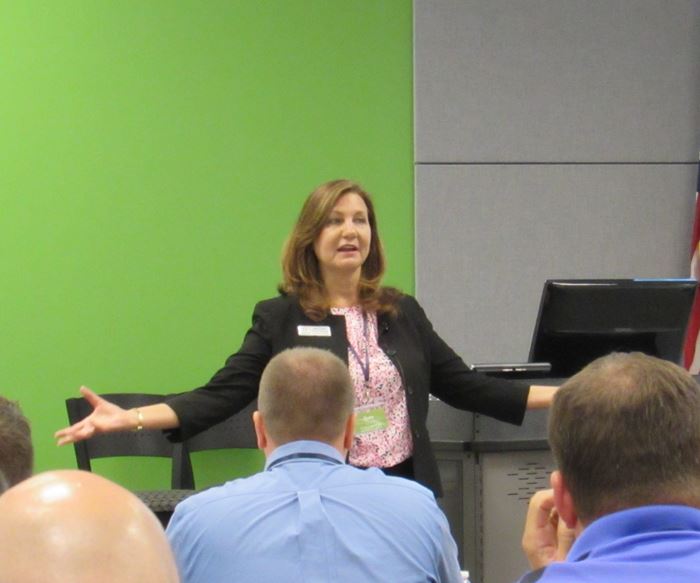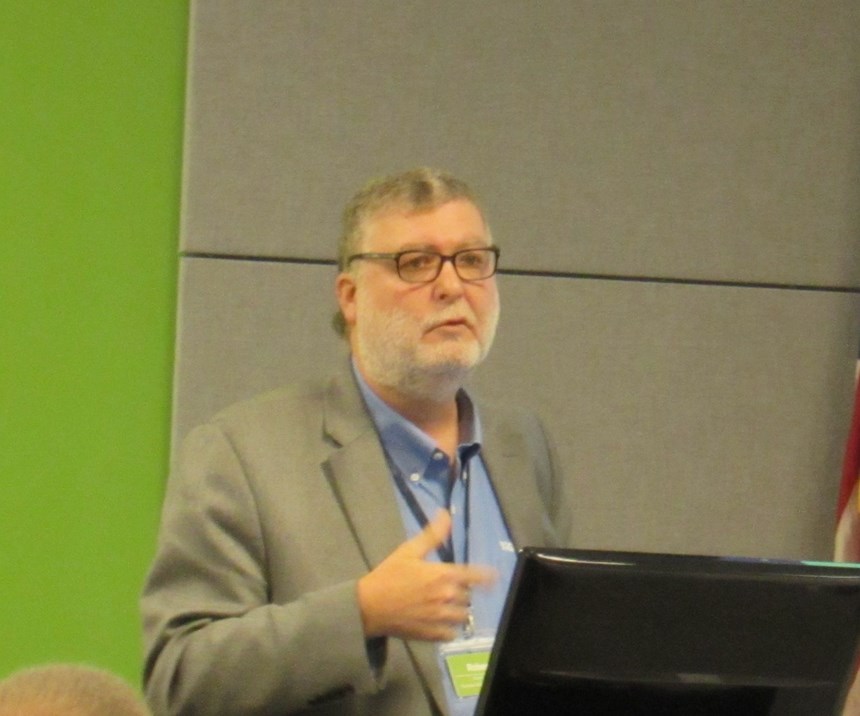Robots and Education Will Help Address Manufacturing Labor Shortage
Part 2: Presenters at a seminar on robotization discuss how collaborative robots and improved college curricula will help address the 2-million-worker gap in manufacturing over the next 10 years.
Share



ECi Software Solutions, Inc.
Featured Content
View More




An important question circling around manufacturing right now is how job shops and other producers will address the skills gap that is expected to hit the industry with a shortage of two million workers in the next ten years. Two proposed answers, not mutually exclusive, are robots and education.
At a recent seminar on robotization in manufacturing, hosted by TechSolve, Suzy Teele, head of marketing and communications at the Advanced Robotics for Manufacturing Institute (ARM), said, “We’ve got a real challenge in the United States where young people don’t really consider manufacturing as a viable career at the scale that we need it in order for us to grow the manufacturing sector in the United States.” This problem has led to the mission of ARM, which is to advance the use of robots in the manufacturing industry.
Ms. Teele said, “Robots are good at doing the work that humans don’t want to do. Our focus at ARM is to figure out how to help humans do the work that they want to do and not the repetitive or unsafe work that robots can do for them.” Collaborative robots (or cobots), which can work safely in conjunction with humans, represent a step toward this goal.
Imagine a job order for a large number of parts that might require a human being to repeat a series of manual tasks: removing the workpiece from the machine, placing a new one inside, opening and closing the machine door, and so on, all for hours on end. For jobs like these, cobots can essentially simulate humans, with no guarding or protection needed around the robot, freeing humans for other tasks.
For this reason, cobots will not only help address the expected worker shortage but also have a significant impact on the type of work humans perform. According to Ms. Teele, “Jobs are evolving away from highly physical labor to cerebral types of jobs, jobs where people are using computers and tablets and mobile apps to manage their environments. Robots are creating a whole other set of career paths like IT solutions architects and robotic coordinators.” The machine shop worker of the near future will take it for granted that a cobot is one of the potential resources for operating a lathe or a vertical machining center.
Meanwhile, supporting skills education will help the manufacturing industry address the upcoming worker shortage as well. “Schools that provide educational opportunities and certifications in manufacturing need funding to buy the necessary equipment, to create new programs and curriculum,” said Bob Graff, senior sales manager of STEM Education at Yaskawa America. “Students need the opportunity to touch, feel and use manufacturing equipment and become certified in it.” Implementing the necessary curriculum is an ongoing process.
Echoing Ms. Teele’s prediction that work on the shop floor will change dramatically, Mr. Graff said that Yaskawa America is increasing its efforts to support training in robot coordination. “We know what the skills are that this new class of worker will need to manage robotics. Our slant is to develop programs, curriculum and tools to help those people who want to get into robotics to start at the earliest stage possible. If we can provide a virtualized environment with the right training tools, then we can accomplish this goal.”
To this end, Yaskawa America has developed an apprenticeship program with Honda within the car-maker’s U.S. manufacturing operations that offers virtual-reality-based training. It enables students to go into a work cell that simulates techniques and processes they will need to manage robots on the shop floor. In addition, Mr. Graff said, “There’s a lot of areas in which we help students: virtualization and software simulation tools, vision, PLC, some CNC, G-code, and basic and advanced programming. We also offer a program called Train the Trainer, which essentially means we’ll train you, give you all the tools you need to go back to the classroom in your own facility and teach what you’ve learned to your students.”
As these examples illustrate, the proper technology exists and the initiative has begun to meet the labor shortage that will affect manufacturers over the next ten years.
The issue seems to be one of motivation. As cobots become integrated into machine shop work and colleges develop and implement the necessary manufacturing curricula, the ability to meet the labor shortage will improve. Young adults seeking careers, however, will need to find manufacturing attractive before they invest time and study in pursuing the field. The answer to this problem seems to follow from Ms. Teele’s assertion that manufacturing work needn’t involve exhausting physical labor, that it can be “cerebral”: the industry needs to make this fact known. If the kind of work that young people want to do these days involves more thinking than lifting, then industry leaders should emphasize the role critical/analytical skills play in manufacturing. Disseminating this idea should proceed alongside the deployment of cobots and the development of manufacturing curricula.
This is Part Two of coverage from the Robotization in Manufacturing seminar, hosted by TechSolve. Read Part One here.
Related Content
Finding Skilled Labor Through Partnerships and Benefits
To combat the skilled labor shortage, this Top Shops honoree turned to partnerships and unique benefits to attract talented workers.
Read MoreWorkholding Fixtures Save Over 4,500 Hours of Labor Annually
All World Machinery Supply designs each fixture to minimize the number of operations, resulting in reduced handling and idle spindle time.
Read MoreHow I Made It: Amy Skrzypczak, CNC Machinist, Westminster Tool
At just 28 years old, Amy Skrzypczak is already logging her ninth year as a CNC machinist. While during high school Skrzypczak may not have guessed that she’d soon be running an electrical discharge machining (EDM) department, after attending her local community college she found a home among the “misfits” at Westminster Tool. Today, she oversees the company’s wire EDM operations and feels grateful to have avoided more well-worn career paths.
Read MoreInside Machineosaurus: Unique Job Shop with Dinosaur-Named CNC Machines, Four-Day Workweek & High-Precision Machining
Take a tour of Machineosaurus, a Massachusetts machine shop where every CNC machine is named after a dinosaur!
Read MoreRead Next
Building Out a Foundation for Student Machinists
Autodesk and Haas have teamed up to produce an introductory course for students that covers the basics of CAD, CAM and CNC while providing them with a portfolio part.
Read More5 Rules of Thumb for Buying CNC Machine Tools
Use these tips to carefully plan your machine tool purchases and to avoid regretting your decision later.
Read MoreRegistration Now Open for the Precision Machining Technology Show (PMTS) 2025
The precision machining industry’s premier event returns to Cleveland, OH, April 1-3.
Read More















.png;maxWidth=150)


































